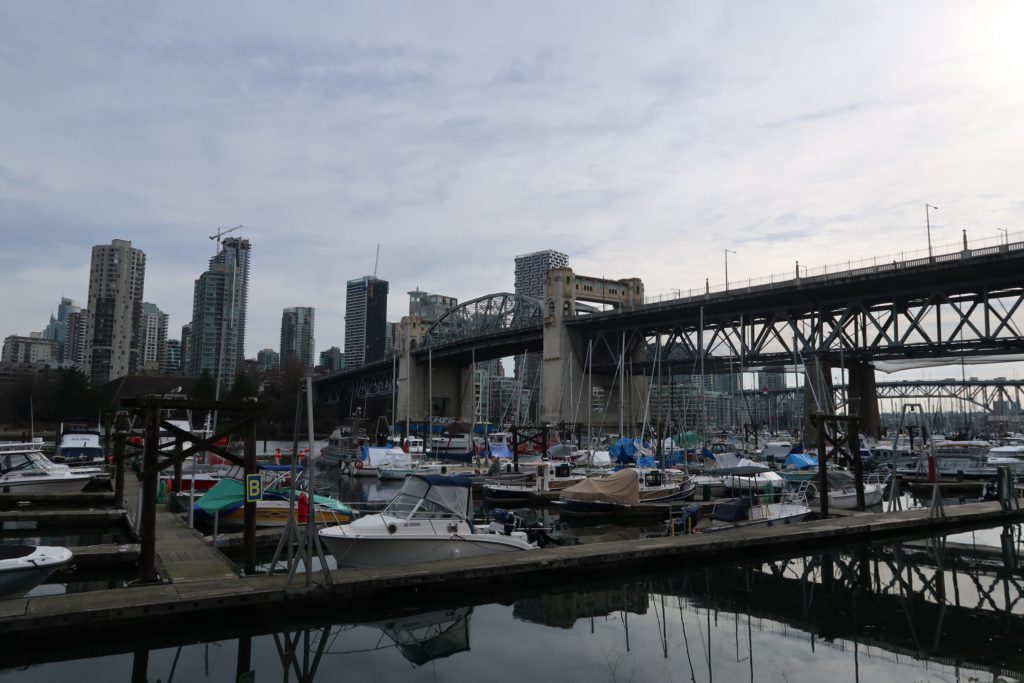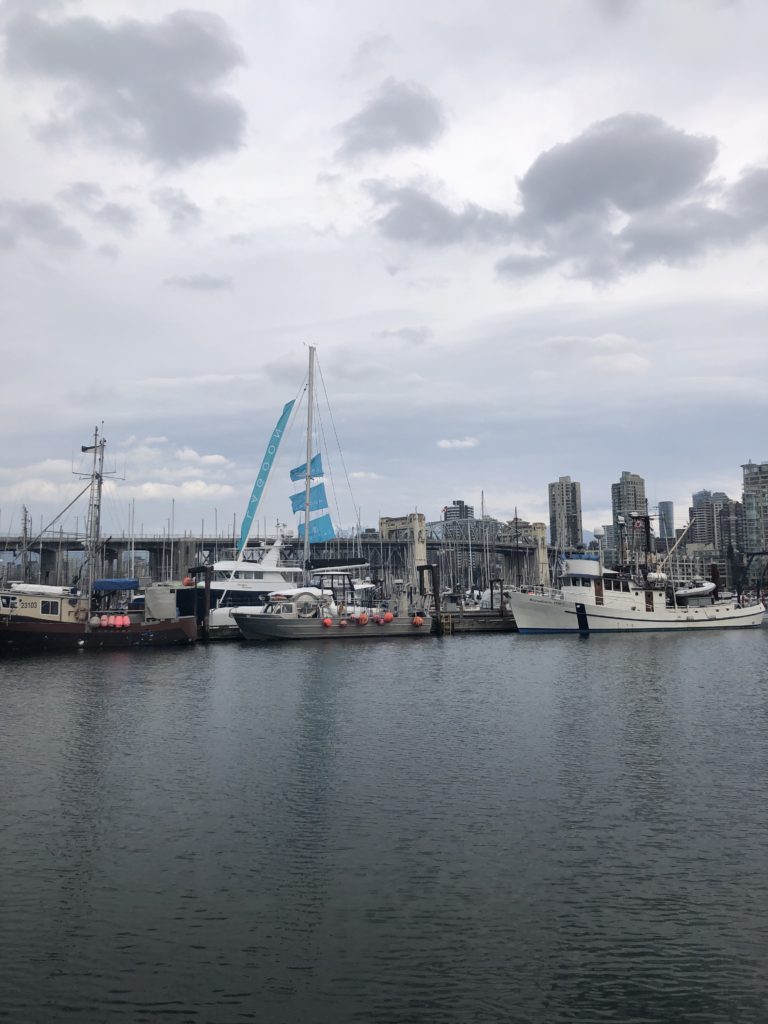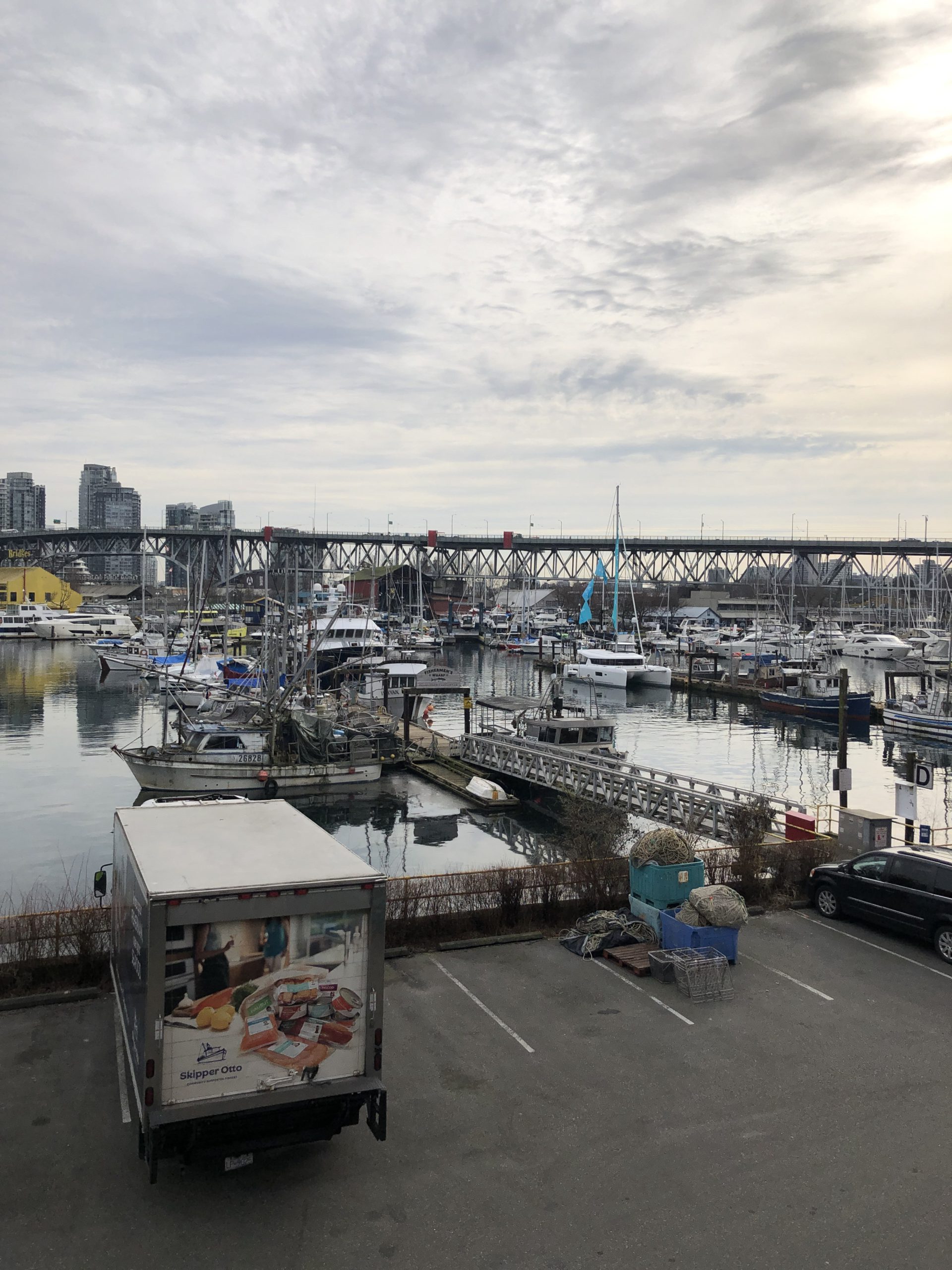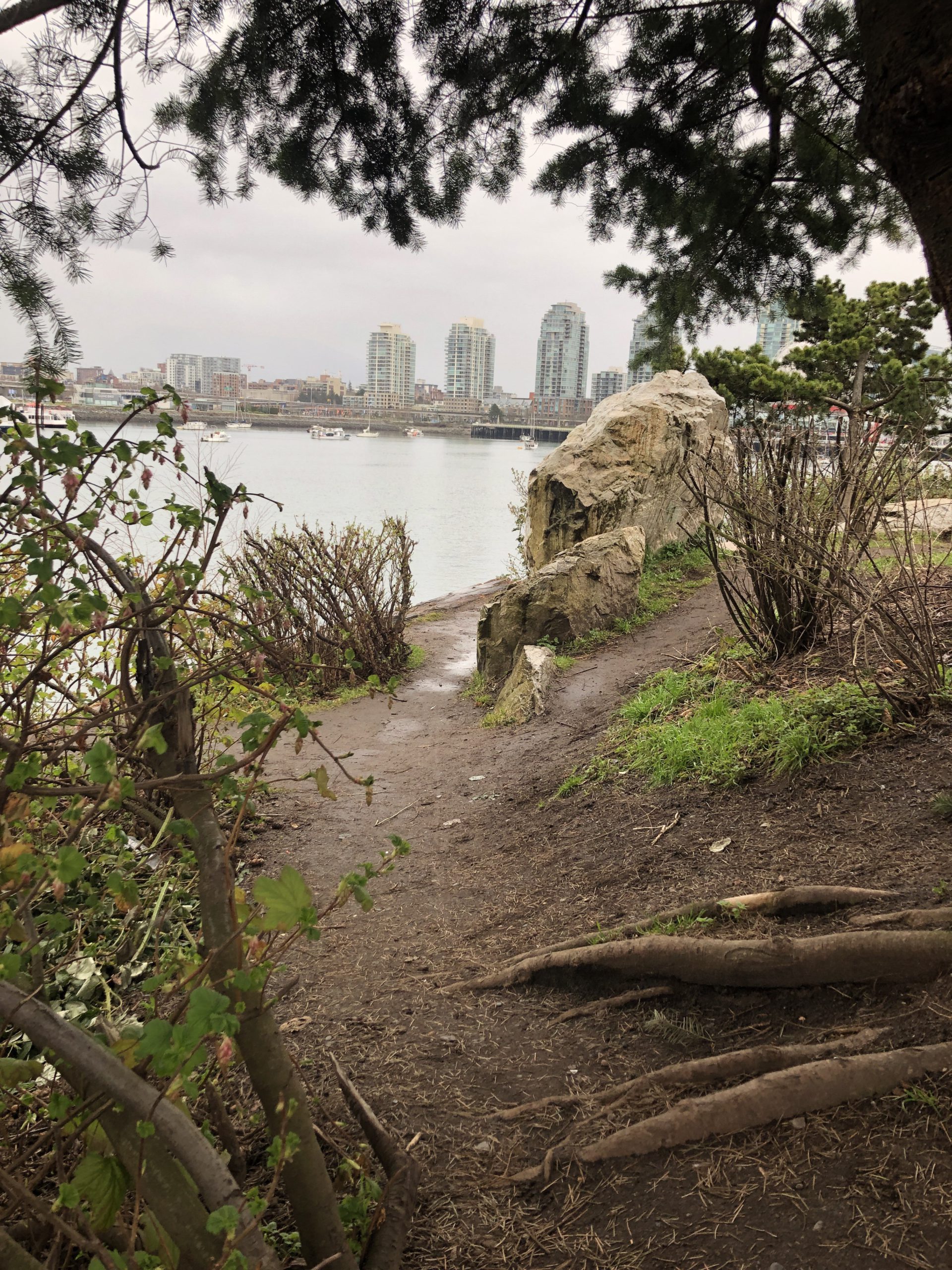I would like to acknowledge that Vancouver is located on the traditional and unceded territory of the Musqueam, Squamish, and Tsleil-Waututh peoples, and that I am a guest in this land. I am thankful for the Coast Salish as they have been stewards of this land since time immemorial and I am reminded of my responsibility to heal past the wrongs inflicted on them. It was sad to learn that their land is given back slowly, but in unconventional places.

Today, we went on a field trip around the False Creek area with my BIOL 420 class and it was amazing! We started off the day just outside the Vancouver Maritime Museum, which hosts a Royal Canadian Mounted Police ship that was one of the first to completely navigate its way around North America. We also had a beautiful view of English Bay, and all the different ships, carriers, and tankers anchored out there. It was also very interesting to learn that Vancouver was the first port in North America to introduce ballast water exchange!
We continued walking to our first location at the Fishermen’s Wharf, to listen to our first speaker, Fraser Macdonald, a small commercial fisherman from Vancouver Island. Listening to him was the most memorable part of this learning experience. Learning about fisheries was very ‘outside my bubble’ for me as all the information was new to me, and was surprising as well. I realized I had a very narrow way of thinking, as it is known that seafood is needed for food security globally, but places where food is scarce, creating a sustainable fishery is difficult as food is already hard to come by. I believe that I had a first-world mind of thinking, and did not consider other problems that could arise, but it was inspiring to hear that if we do eat sustainable seafood, there is a way that we can get seafood without taking too much of it out of the environment and exist with the fish stocks. A question that arose in my mind when hearing about this, was is if the agriculture industry was more sustainable that the fishing industry or vice versa? I think that this is a very complicated question considering all the factors, but Fraser said that seafood is less energy intensive per protein compared to beef or pork. There is a lot of push on social media to eat less red meat, or eat less meat in general, but there is not much widely publicized information about eating less fish or shrimp. This also makes decisions about choosing my food more difficult in the future, as I have to learn more about the impacts of choosing my meal. This is something that I plan to do a little more research on just for my knowledge and peace of mind.

Another message that I took away from Fraser’s talk was that we should support the fisheries that are doing it right with our dollars, such as Skipper Otto! It was amazing to hear that even working as a fisherman, Fraser has time to develop a new, innovative product: a fully compostable, foam, vacuum back pack sleeve for fish with a 1-year shelf life! He was very involved with fisheries, and sustainability, which is great. Something that was very surprising to me was that a commercial fishing license costs $2 million dollars! I couldn’t hear much about if that license was for a lifetime, or expired in a couple years. I also wondered how many years it takes to make back the $2 million dollars. The film crew were surprisingly ‘in your face’ when filming, which made me very nervous. I did not expect them to be so close, and I thought they would mostly focus on Fraser and have us in the background, but they were very up close and personal.

When listening to our second speaker at Habitat Island, Mark Adams, the leading authority on impact migration and habitat design for restoration, one of the things that the said left an impact on my mind. “With nature as your influence, you plagiarize it’s design.” I found that quote to be very funny. Mark also seemed to be very melancholic about his Habitat Island, and how all his work has been touched by human influence, when it wasn’t meant to be. It seemed a bit disappointing that even if you try to build something sustainable and good for the environment and ecosystem, it cannot be designed without designing for human interaction. This makes me think of the how us humans think that we can “do whatever we want” since we are on top of the power dynamic, even if it does ruin it a bit for others. Mark brought up a great point that communication is key with the community but that it’s difficult to maintain and keep up, even updating the Habitat Island sign is something that hasn’t been changed for 10 years.

One thing that could have made this field trip more beneficial for me was to provide a detailed itinerary with times because it was a little difficult to know what was coming up next, or how to manage my time (during lunch time and breaks). It is fine if we are off schedule but I like to know what is happening. I am glad to have taken this course, and that I was able to have the opportunity to learn so much! I am very thankful for Amanda, Roshni, and Tanvi for coordinating the course so well to keep us all connected and to maximize our interactions during this time. I am also grateful for the Guylian Chocolate’s as they are very good and would love to buy more and support other sustainable causes at the same time!